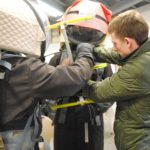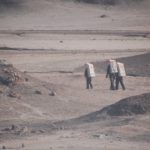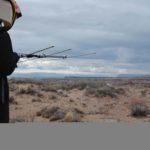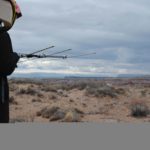GreenHab Report
Mark Gee
10Jan2018
Environmental control:
Heating
Shade cloth on
Working Hour: 06:50PM
Inside temp at working hour: 18 C
Outside temp during working hours: 0 C
Inside temperature high: 26 C
Inside temperature low: 15 C
Inside humidity: 46 %RH
Inside humidity high: 60 %RH
Inside humidity low: 34 %RH
Hours of supplemental light:
For the crops 05:00 to 11:59 PM
Changes to crops: Microgreens almost ready to harvest. Spinach is growing rapidly. Cucumbers continue to produce fruit. Beans near harvest. Tomatoes are flowering but no fruit set. Sprouts are emerging from the seeds planted a few days ago.
Daily water usage for crops: 10 gallons
Time(s) of watering for crops: 06:30PM
Research observations: Microgreens are growing rapidly. No change to tomatoes sprayed with moringa extract.
Changes to research plants: None.
Aquaponics: Not in use.
Narrative: Growing up, we learn to fear bees because of their sting, then to like them because of their honey. But we should treasure them for their work as pollinators. Bees and other insects perform the critical task of transferring pollen from flower to flower. Without this transfer by insect, many crops would not produce fruit because their pollen will not blow in the wind. Some crops, namely the Cucurbitacea family of pumpkins, melons, squash and cucumbers, have co-evolved with their own species of bees that specialize in pollinating these crops. Almond farmers will actually pay beekeepers to bring their bees into the almond orchard while the trees are flowering to help ensure that there will be a bountiful harvest.
Unfortunately, there are no bees on Mars.
To make up for this, I put on my bee suit in the Green Hab today, plucked a male flower from a cucumber plant, and buzzed from cucumber to cucumber, sprinkling pollen in the flower as I went. It took effort and patience.
There are many natural resources that we do not appreciate until they are gone. Surviving on a new planet will be challenging and full of surprising realizations of how much we are missing back on Earth.
Support/supplies needed: I have several questions of general interest.
Is the water supply from Hanksville drawn out of a well, river, or something else?
What are the heater control settings? What temperature is it set to turn on and what temperature for off?
What is to be done with used potting soil?
Is the shade cloth a 60/40 cloth? Is there a better way to describe how much shade it gives?








You must be logged in to post a comment.